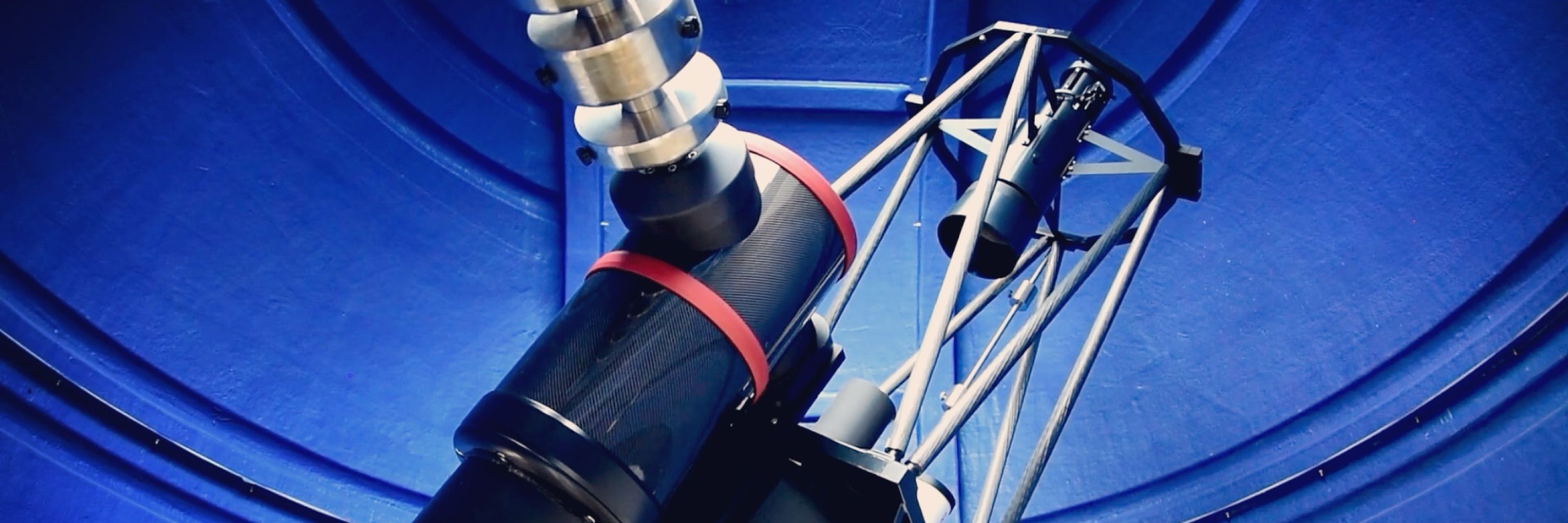
Robert W Williams
@robertwwilliams.bsky.social
Paleontologist / palynologist. Dinoflagellate taxonomy through 220 million years of evolution, which coincidentally is the time span of one Milky Way rotation.
Astrophotographer and telescope optics maker.
https://www.dinium.net/english/
Astrophotographer and telescope optics maker.
https://www.dinium.net/english/
Reposted by Robert W Williams
Oh well, it's only takes years of trial and error studying various techniques and inhuman quantities of patience. Here's 2000 hours compressed to 30 seconds. 24 inch (62 cm) diameter f/3.4 paraboloid primary mirror.
November 11, 2025 at 12:58 PM
Oh well, it's only takes years of trial and error studying various techniques and inhuman quantities of patience. Here's 2000 hours compressed to 30 seconds. 24 inch (62 cm) diameter f/3.4 paraboloid primary mirror.
Reposted by Robert W Williams
Precisely! These satellites are simply pinhole cameras producing an image of the sun, which at 600 km distance is 5 km in diameter. A "giant" 18-meter reflector is an imaging optic of focal ratio f/33333. That's not solar power boosting. It's a brighter than usual Iridium flash!
November 8, 2025 at 3:57 AM
Precisely! These satellites are simply pinhole cameras producing an image of the sun, which at 600 km distance is 5 km in diameter. A "giant" 18-meter reflector is an imaging optic of focal ratio f/33333. That's not solar power boosting. It's a brighter than usual Iridium flash!
Reposted by Robert W Williams
Assuming a rubble pile with a density of 1800 kg/cubic metre, the gravitational acceleration on its surface is 2,77e-6 metres per second squared. Spinning once in five minutes, the centrifugal acceleration is 870 times more than gravity. It couldn't exist as a rubble pile. Seems to be a solid body.
September 19, 2025 at 11:06 AM
Assuming a rubble pile with a density of 1800 kg/cubic metre, the gravitational acceleration on its surface is 2,77e-6 metres per second squared. Spinning once in five minutes, the centrifugal acceleration is 870 times more than gravity. It couldn't exist as a rubble pile. Seems to be a solid body.
Since I recently retired, I can gleefully work all day figuring and testing my 62 cm (24 inch) cellular primary mirror. Having produced a good spheroidal figure, it's finally ready to parabolize. Amazingly, this is Norway's largest optical telescope. 🔭
August 2, 2025 at 6:34 PM
Since I recently retired, I can gleefully work all day figuring and testing my 62 cm (24 inch) cellular primary mirror. Having produced a good spheroidal figure, it's finally ready to parabolize. Amazingly, this is Norway's largest optical telescope. 🔭
Rho Ofiuchi cloud complex and globular cluster M4. Even with 30 minutes or less exposure in all four channels, this region is bright enough to give a pleasing, though noisy result. There is of course no light pollution in the Kalahari Desert. 🔭 youtu.be/O73KfQrsFqA?...

Within the Heart of the Scorpion
YouTube video by Robert Walter Williams
youtu.be
August 27, 2024 at 8:20 PM
Rho Ofiuchi cloud complex and globular cluster M4. Even with 30 minutes or less exposure in all four channels, this region is bright enough to give a pleasing, though noisy result. There is of course no light pollution in the Kalahari Desert. 🔭 youtu.be/O73KfQrsFqA?...
The Soul Nebula. 8.5 hours of Narrow-band exposures with a 12 cm refractor and a cooled (-25C), mono KAF-16803 sensor. Clear autumn skies are rare here in southwest Norway. That means there's a lot of time to process images, but little time to acquire images! 🔭
youtu.be/JqQJQ3s_p1o?...
youtu.be/JqQJQ3s_p1o?...

Soul Nebula in Cassiopeia
8.5 hours exposure time through Chroma narrowband filters. H-a 4h 10 min O-III 2h 40min S-II 1h 40min Telescope: Skywatcher Esprit 120, focal length 840 mm, f/7 Drive: Astrosysteme DDM160 Camera: Apogee U16M, CCD temperature = -20 C Processing: PixInsight Dinium Observatory, Østhusvik, Norway
youtu.be
August 8, 2024 at 10:02 PM
The Soul Nebula. 8.5 hours of Narrow-band exposures with a 12 cm refractor and a cooled (-25C), mono KAF-16803 sensor. Clear autumn skies are rare here in southwest Norway. That means there's a lot of time to process images, but little time to acquire images! 🔭
youtu.be/JqQJQ3s_p1o?...
youtu.be/JqQJQ3s_p1o?...

